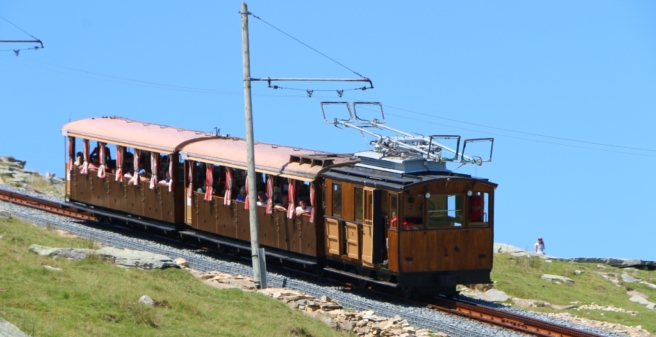
North of the Pyrenees and close to the Atlantic coast, a 905-metre-high mountain rises from the plain, visible from afar. Larrun, in Basque or officially in French La Rhune, often shrouded in cloud, allows a unique view of the famous coastal towns of Biarritz, Saint-Jean-de-Luz and further, but also towards the Pyrenees rising from here. The sporty last French Empress Eugène de Montijo, wife of Napoleon III, gave the impetus. She climbed the nearby mountain from the emperor and empress’s summer residence in Biarritz in the summer of 1859, and an obelisk was erected the following year to commemorate her visit. With the arrival of the railway in 1865, Biarritz was connected to the European railway network and many wealthy Russians travelled to spend their summer months taking the cure in Biarritz. Many of them had themselves taken up the mountain with its magnificent view.
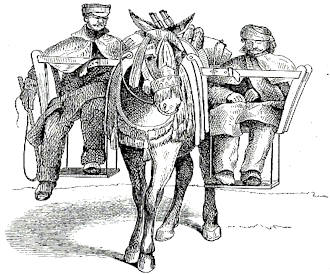
In 1908, the idea was born to build a railway on French soil to just before the summit, which is on Spanish territory. Work began 4 years later and was interrupted by the First World War of 1914-18. The locomotives of the Swiss manufacturers BBC and SLM, already delivered between 1912 and 1914 and ordered at the same time as the Luchon – Superbagnères mountain railway, were parked. It was only after 12 years that the line could be inaugurated to the summit on 30 June 1924.
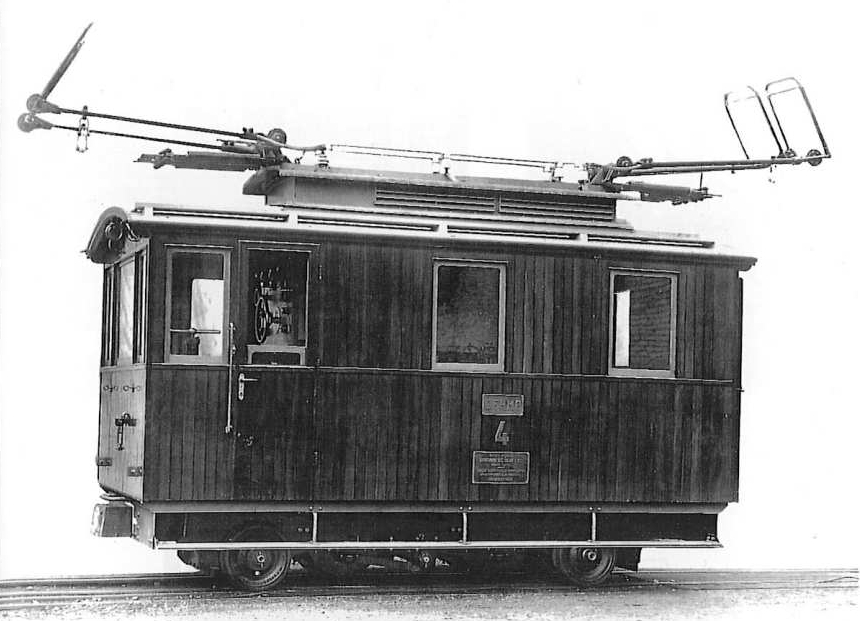
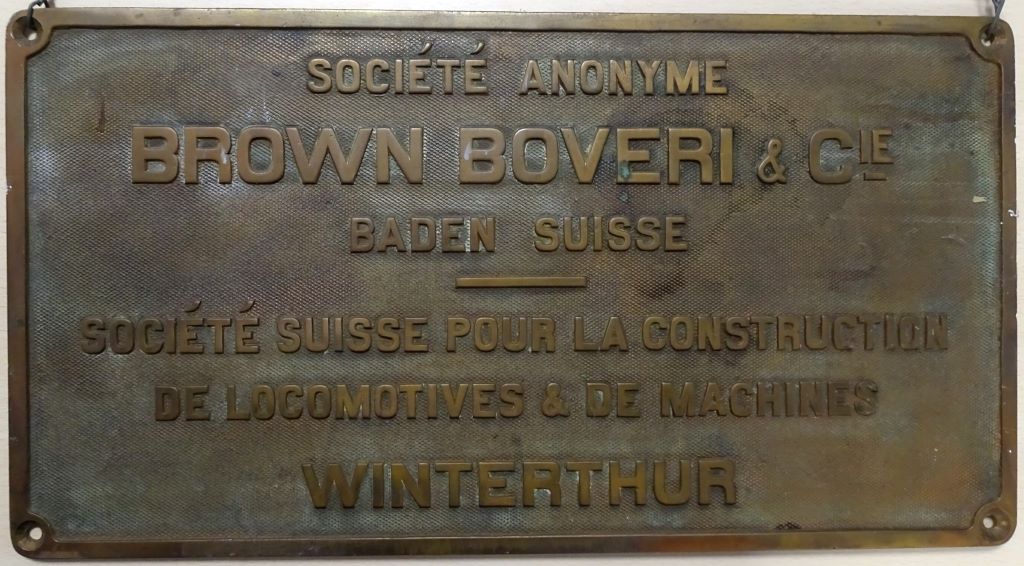
During the Second World War, from 1939 to 45, regular service was suspended, the only supply runs being to the radar station of the German occupying power on the strategically important summit. After the end of the war, traffic increased again, so that in 1972 and 1979 various rolling stock was purchased from the Luchon – Superbagnères mountain railway, which had been closed in 1966. The entire fleet, railcars and carriages, was completely restored, checked and brought up to date in 1996, partly according to original plans. Over the last 40 years, La Rhune has become the most popular tourist attraction in the French Basque Country and has been awarded the Natura 2000 designation, while at the same time the number of trains has been increased to cope with the increasing number of passengers. In collaboration with the LPO (League for the Protection of Birds), the massif has also received ecological recognition.
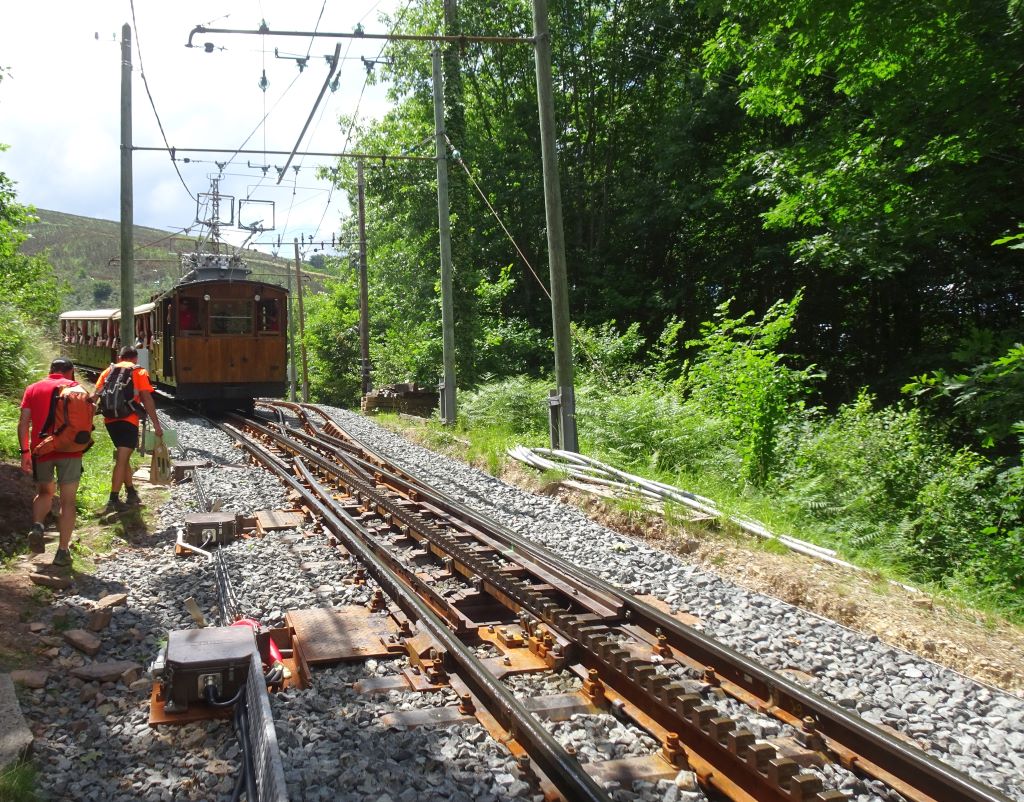
Last autumn, large-scale renovation work began, especially of the track and also the beautification of the Basque-style station, and although shortly before the work was completed a landslide had swept away a section of the track after a heavy rainfall, the line was able to open for the summer season on 3 June after a record time of nine months, with around 320,000 guests expected, and up to 3,000 on peak days. 27 million euros were spent on the renovation. The new System Strub racks were supplied by the Swiss company Tensol Rail. In the process, a two-axle diesel rack-and-pinion locomotive from Stadler Rail was also purchased for the construction work and later for emergencies, an aluminium-built rescue car for possible evacuations, a wagon for inspecting and repairing the overhead line, as well as other aids, although during the last 99 years there had only been one emergency where such aids would have been helpful.
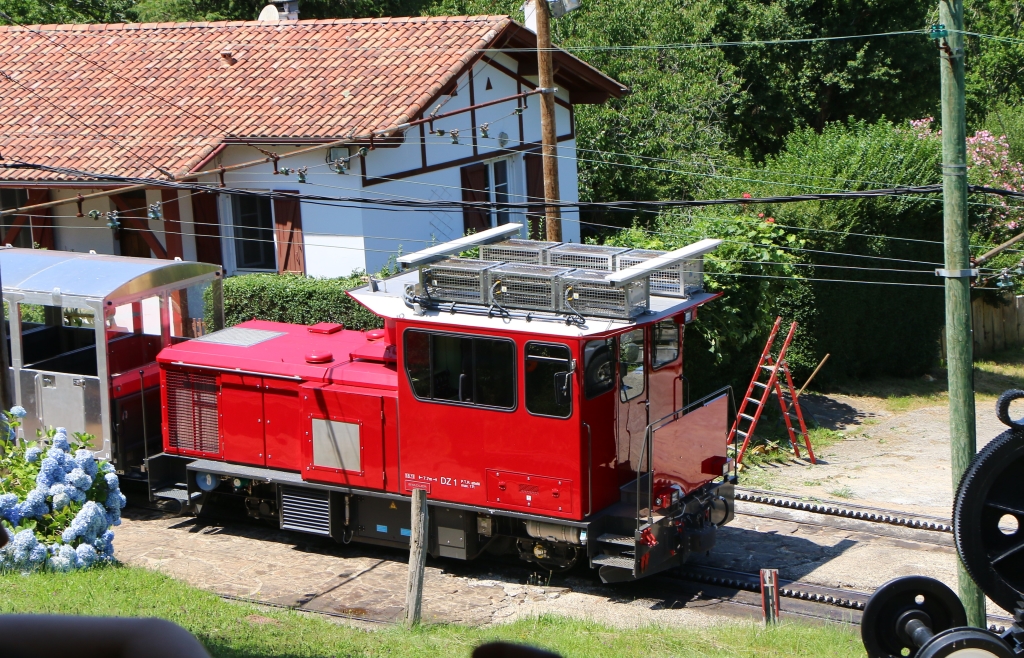
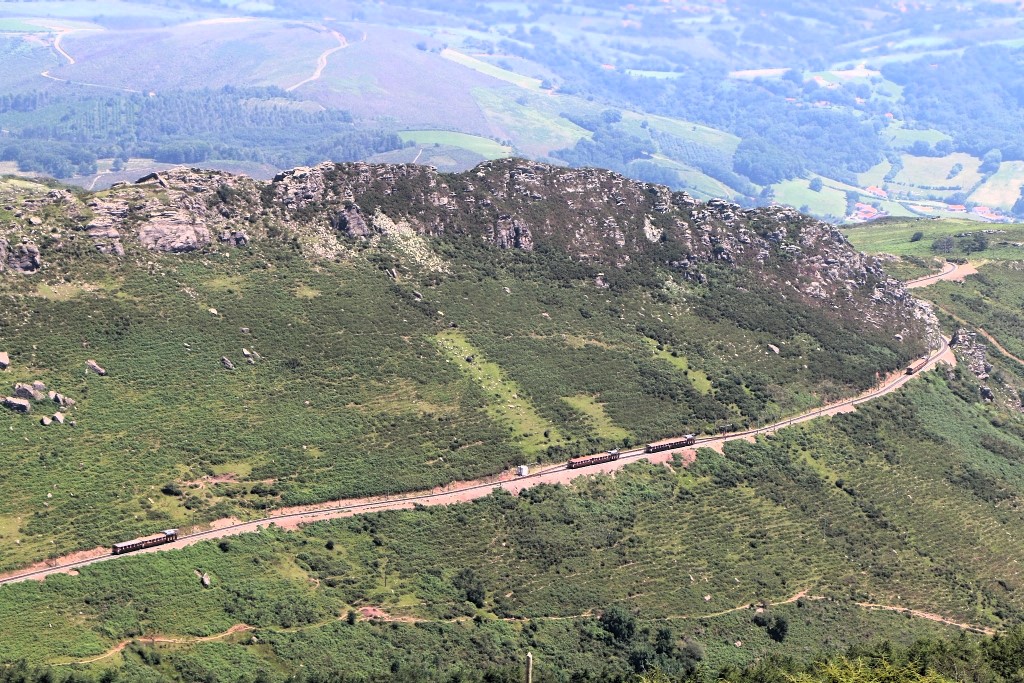
The metre-gauge rack railway with a gradient of up to 250 ‰ runs over 4.2 km from the Col de Saint-Ignace station, 170 m above sea level, to the 905 m high panoramic mountain La Rhune. It is equipped with a rack and pinion according to the Strub system and is fed with three-phase current of 3000 V 50 Hz, which requires a double overhead power line. In the middle, the single-track line has a crossing point, which allows a continuous 35-minute interval in both directions with a technical journey time of 30 minutes. Each train consists of a two-axle locomotive on the lower side and two passenger cars with 60 seats each on the upper side, which are pushed uncoupled. Two trains per direction always run simultaneously at short intervals on sight without technical train control equipment. The speed is 9 km/h throughout. Between 20 and 30 % of the energy generated in the regenerative traction motors of the downhill trains is recovered for the traction of the uphill trains. To reduce noise and wear, the rails are lubricated with biodegradable grease; the adhesion conditions do not play a role, as both drive and braking are done exclusively via the gear wheels and the running wheels rotate loosely.
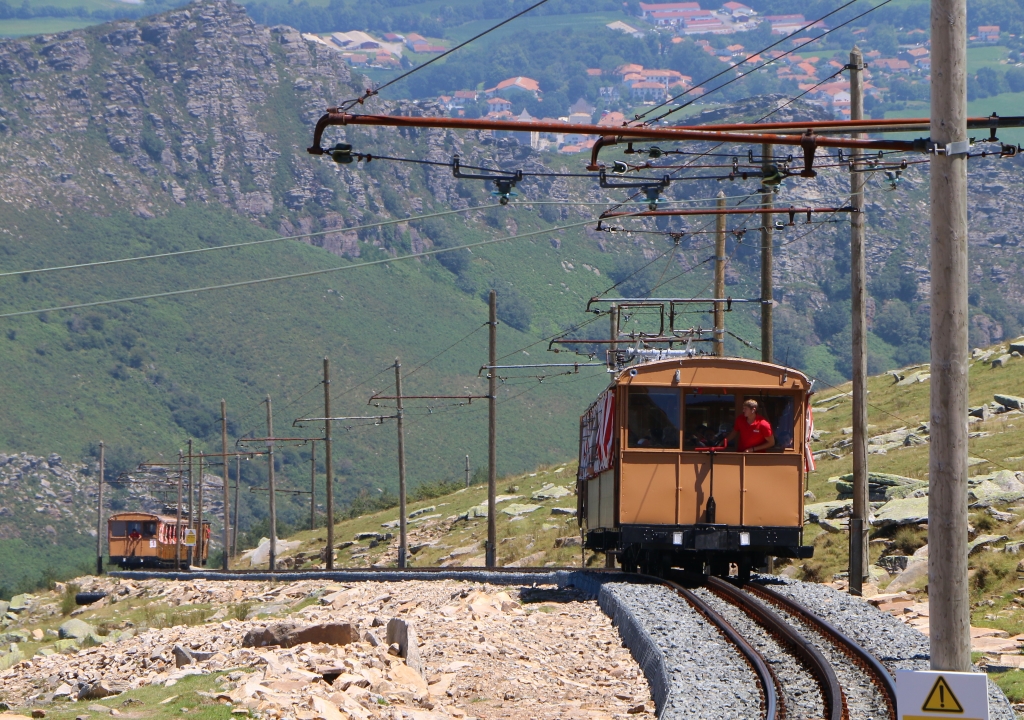
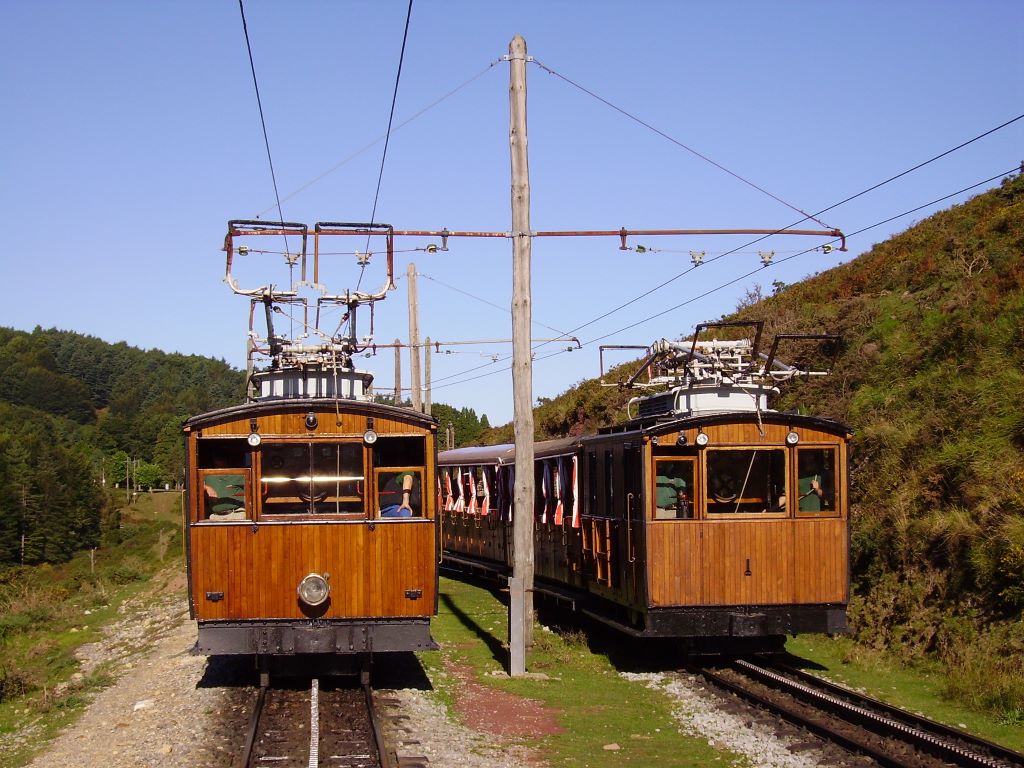
Together with the eight, 5 t open wagons, four trains can be formed. They were built by the Soulé company in Bagnères-de-Bigorre, at the foot of the Pyrenees, with side walls of lacquered chestnut wood, the roof of Pyrenean fir wood, the floor of chestnut wood from the Ariège and the train driver’s platform of weatherproof African iroko. A mountain-side bogie and a valley-side single axle form the original unbraked running gear. On 28 February 1954, a serious accident occurred on the mountain railway in Luchon, which was equipped with the same rolling stock. Due to a wrongly set switch, first the locomotive derailed and the whole train raced downhill at 80 km/h instead of 8 km/h. The locomotive with the two mechanics plunged 500 m in a curve, the wagons fortunately came to a standstill on the ballast beforehand. A total of nine people were killed. Originally the carriages were unbraked, but after the accident they were retrofitted with a cogwheel on the valley-side axle and an associated manual operation by the train manager or passengers. However, no such accident ever occurred on the La Rhune railway.
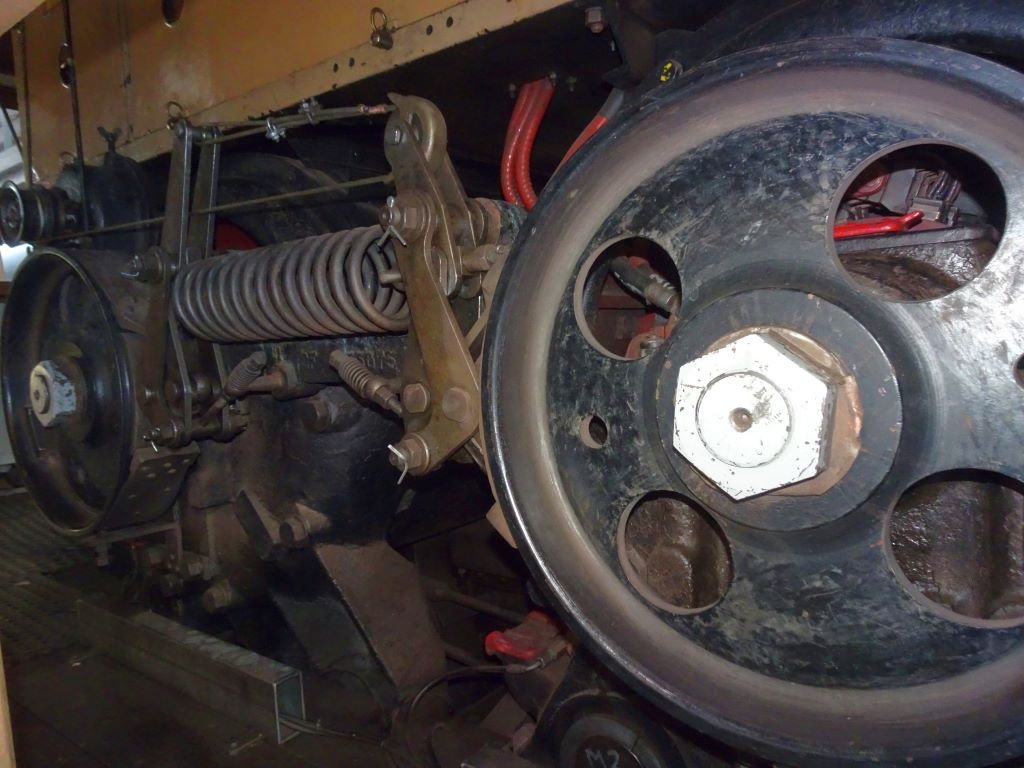
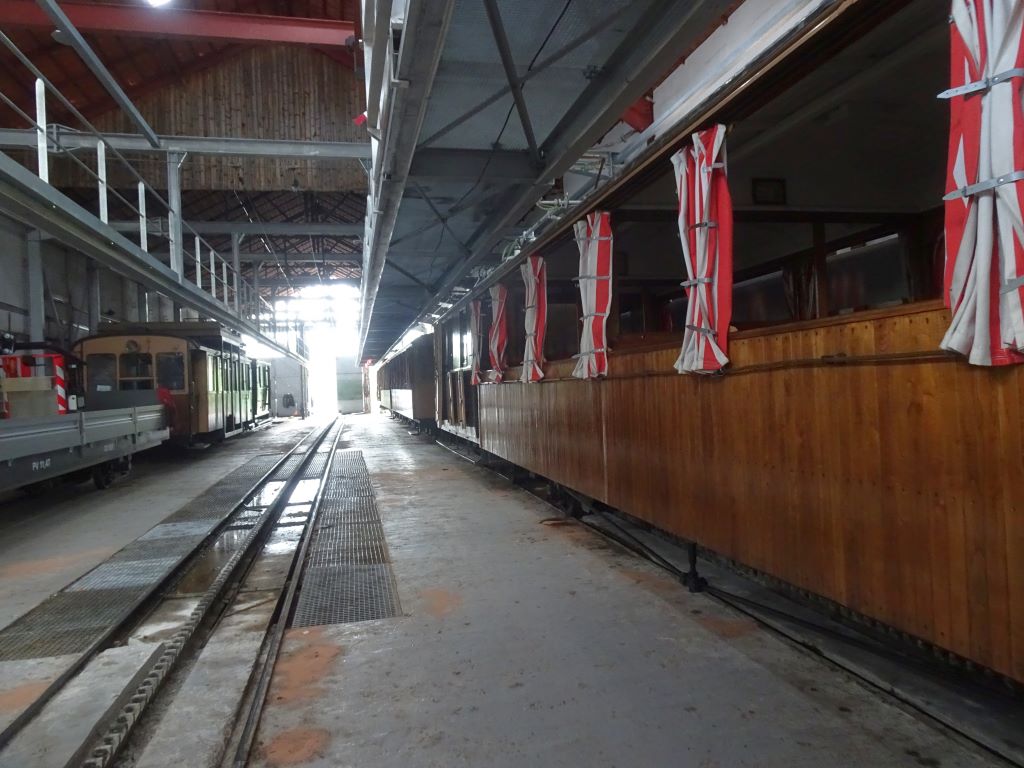
Together with the eight, 5 t open wagons, four trains can be formed. They were built by the Soulé company in Bagnères-de-Bigorre, at the foot of the Pyrenees, with side walls of lacquered chestnut wood, the roof of Pyrenean fir wood, the floor of chestnut wood from the Ariège and the train driver’s platform of weatherproof African iroko. A mountain-side bogie and a valley-side single axle form the original unbraked running gear. On 28 February 1954, a serious accident occurred on the mountain railway in Luchon, which was equipped with the same rolling stock. Due to a wrongly set switch, first the locomotive derailed and the whole train raced downhill at 80 km/h instead of 8 km/h. The locomotive with the two mechanics plunged 500 m in a curve, the wagons fortunately came to a standstill on the ballast beforehand. A total of nine people were killed. Originally the carriages were unbraked, but after the accident they were retrofitted with a cogwheel on the valley-side axle and an associated manual operation by the train manager or passengers. However, no such accident ever occurred on the La Rhune railway.
Various private companies had operated the rack railway for decades. In October 2012, the French département of Pyrénées-Atlantiques, as the owner of nearby ski resorts and the infrastructure of the La Rhune tourist train, took over the management and operation itself. This is done by a public institution of the department, the Etablissement Public des Stations d’altitude (EPSA). The railway operation also includes a three-track depot with a small workshop located a few hundred metres above the valley station on the Col de St. Ignace. The railway employs around 20 permanent staff and seasonally around 40 more people.
16.07.2023
